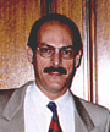|
|
 
|
|
Author
|
Topic: The Rise of the Multiplex
|
|
|
William T. Parr
Jedi Master Film Handler

Posts: 823
From: Cedar Park, TX
Registered: Nov 2000
|
 posted 07-30-2002 11:37 AM
posted 07-30-2002 11:37 AM




Hey Steve, In my hometown of Corpus Christi, Texas twin theatres were showing up in the late 60's. Most notably the Duex Cine in 1968, and the National Twin in 1967. The Deux Cine was built by Robb Rowley United, as part of the United Artist theatre chain. The National Twin was open by Gulf State Theatres then taken over by Fox theatre in 1969 0r 70 and then finally by Mann theatres in 1973. In 1970, the UA Woodlawn was twined by running a wall down the middle, and the name changed to Cine West 1 and 2. Prior to being twinned, the Woodlawn opened in the early to mid 60's. The Movies on Staples Street was built in 1976 or 77 was a Jerry Lewis twin theatre operated by Movie One. In the mid 70's plans were on the drawing board to triple the UA Centre theatre in Downtown Corpus Christi. That would have involved twining the balcony into two theatres and leaving the main floor alone. Result would have been 2 220 seat auditoriums and 1 900 seat. Speculation as to why this never occurred ranged from the lack of increased revenue at other locations to the impending closing of the theatre that did not happen for 12 years after the initial drawing were proposed. Also at the same time UA was twining stuff in Corpus, they tripled the Plaza theatre in Laredo TX in 1973 by shorting the main floor into two back to back auditoriums and adding a wall at the end of the balcony for a 3rd screen. The Howard in Taylor, TX was made a twin during the same time frame by adding a Wall and false stage at the end of the balcony and building a booth downstairs. Several San Antonio theatres owned by Santikos at the time were done in a similar fashion including the Woodlawn, Broadway and Aztec. The Woodlawn and Broadway were later sold to Plitt. The Aztec was closed briefly then re opened as an independent. Hope this info helps.
| IP: Logged
|
|
Adam Martin
I'm not even gonna point out the irony.

Posts: 3686
From: Dallas, TX
Registered: Nov 2000
|
 posted 07-30-2002 02:54 PM
posted 07-30-2002 02:54 PM




Jack Loeks started building twins in West Michigan in 1970 under the premise of his "Auto-Cine, Inc." company. They were designed for 6,000-foot reels with a remote control in the box office or manager's office. You know, so a projectionist wasn't needed.  You see, Jack had just come back from a trip to Kansas City, where he visited several of Stan Durwood's multi-screen theaters, one of which had six screens. You see, Jack had just come back from a trip to Kansas City, where he visited several of Stan Durwood's multi-screen theaters, one of which had six screens.The Campus I & II in Mount Pleasant opened in February 1970; followed by the Alpine I & II in Grand Rapids in September; the Auto-Cine Twins in Muskegon in December 1971; and the Plaza 1 & 2 in Portage in October 1972. Eventually, the Campus (now the Cinema Four Theatre) and Alpine each had additions of two screens and both theaters closed this year to be demolished for other uses. The Plaza remained a twin until its closure this year. The Auto-Cine in Muskegon was added on to also, becoming a 6-plex, then in 1989 was a 12-plex, and is now a 16-plex called Cinema Carousel, with a huge carousel in the lobby. In the Grand Rapids suburb of Wyoming, the original 800-seat Studio 28 was built in about 1967 adjacent to the Beltline 3 Drive-In. The theater did so well, a second screen was added in short order. Eventually, four more screens followed suit. Six more screens were later added, creating a 12-plex. With the further addition of eight more screens, the theater became the world's first 20-plex. The original 800-seat auditorium is still intact with a sloped floor. The Drive-In was closed around 1987 to make way for parking for the 12-plex. West Michigan's largest 35mm screen surface, however, is now located at the chain's Celebration Cinema on Grand Rapids' northeast side, in the same complex as Michigan's third Imax theater.
| IP: Logged
|
|
John Scott
Master Film Handler
Posts: 252
From: Oakdale, MN, USA
Registered: Jul 2000
|
 posted 07-30-2002 03:19 PM
posted 07-30-2002 03:19 PM




It still kills me to this day what was done to a glorious former opera-house that was turned into a theatre in my hometown of Manitowoc, WI.The Strand Theatre was a beautiful single screen 1000+ seat house with a balcony (that had been closed off years before) and a natural stadium seating incline towards the back that went up a full story (You could enter the auditorium from the front, or climb a flight of stairs at the rear of the lobby and enter from the back). I remember as a kid seeing all 3 Star Wars films there and the last film I recall seeing there was Robocop. The theatre then closed for a "retrofit" which ended up ruining the place. Instead of one beautiful house, the auditorium was chopped into 3 screens. The front Third was turned into a 200 seat house (this auditorium had most of the main screen even though due to construction it lost about a third of the screen as well). The middle third was turned into a weird auditorium shaped like a squared off u with the booth in the middle of the auditorium and lots of pillars from the original house. Because of the shape and the pillars there are a lot of dead zones for sound (or weird accoustics making auditorium noise echo horribly). Auditorium #3 is the old balcony with the screen on the floor in the front (and a nice cement floor up front to cause lots of reflected ambient light from the screen. The 4th auditorium was new to the building and was ok, with DTS sound installed for Jurassic Park. They then a few years later added on 2 more small screens in the back (50-100 seaters) which basicly maxed them out on their space downtown. Its just a shame though that this gorgeous theatre was chopped up into a theatre that when I visit my folks I can't stand to visit.
| IP: Logged
|
|
|
|
|
|
All times are Central (GMT -6:00)
|
|
Powered by Infopop Corporation
UBB.classicTM
6.3.1.2
The Film-Tech Forums are designed for various members related to the cinema industry to express their opinions, viewpoints and testimonials on various products, services and events based upon speculation, personal knowledge and factual information through use, therefore all views represented here allow no liability upon the publishers of this web site and the owners of said views assume no liability for any ill will resulting from these postings. The posts made here are for educational as well as entertainment purposes and as such anyone viewing this portion of the website must accept these views as statements of the author of that opinion
and agrees to release the authors from any and all liability.
|

 Home
Home
 Products
Products
 Store
Store
 Forum
Forum
 Warehouse
Warehouse
 Contact Us
Contact Us




 Printer-friendly view of this topic
Printer-friendly view of this topic








 You see, Jack had just come back from a trip to Kansas City, where he visited several of Stan Durwood's multi-screen theaters, one of which had six screens.
You see, Jack had just come back from a trip to Kansas City, where he visited several of Stan Durwood's multi-screen theaters, one of which had six screens.



